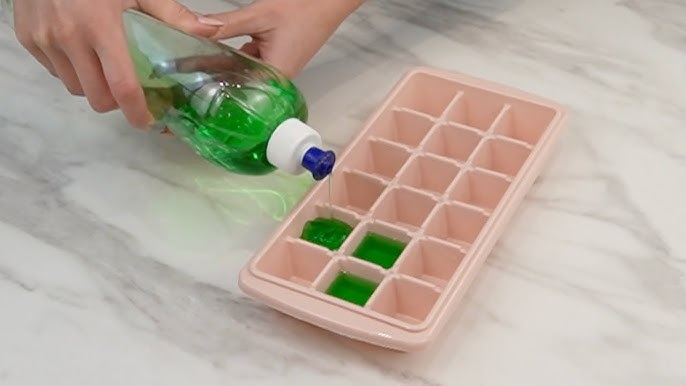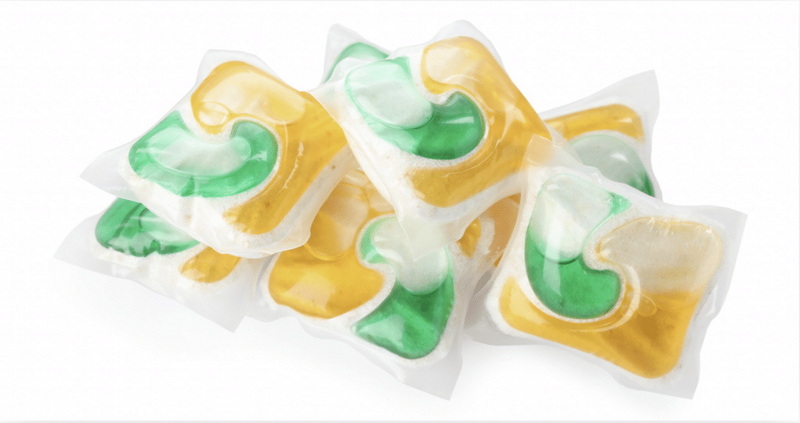Dongguan UFine Daily Chemical Co.,Ltd.
- All
- Product Name
- Product Keyword
- Product Model
- Product Summary
- Product Description
- Multi Field Search
Views: 222 Author: Tomorrow Publish Time: 11-14-2025 Origin: Site











Content Menu
● Moisture sensitivity and packaging
● Can dishwasher pods be frozen?
● What happens when a pod is frozen and thawed?
● Storage guidelines to prevent issues
● Environmental considerations
● Comparative perspective: pods vs liquid detergents
● Common myths about freezing dishwasher pods
● Best practices for buyers and sellers
● Industry trends and future directions
● FAQ
>> 1. Do dishwasher pods survive freezing temperatures?
>> 2. What should I do if a pod is cracked after being frozen?
>> 3. Can I store dishwasher pods in the refrigerator?
>> 4. Will freezing affect the scent or additives in the pod?
>> 5. Are there benefits to freezing pods to extend shelf life?
Dishwasher pods are a convenient, pre-measured solution for cleaning dishes. They are designed to deliver consistent results by releasing detergent, rinse aid, and sometimes extra additives all at once. However, questions often arise about storage conditions, especially the possibility of freezing. This article explores whether dishwasher pods can be frozen, what happens when they are frozen, how freezing affects performance, and best practices for storage to ensure optimal cleaning results.

Dishwasher pods are small, water-soluble packets typically made from polyvinyl alcohol (PVA). They contain concentrated detergent formulated to work in automatic dishwashers. Some pods include additional components such as enzymes, whitening agents, or fragrances. The packaging is designed to protect the pod from moisture and to release its contents once it encounters water in the dishwasher.
The effectiveness of dishwasher pods hinges on their moisture sensitivity. Even brief exposure to humidity in the pantry can cause partial dissolution or clumping. Manufacturers usually seal pods in moisture-resistant pouches or blister packs to prevent dehydration or premature activation. If a pod absorbs moisture, it may become less effective or leak in the dishwasher, potentially leaving residue on dishes or causing sudsing issues.
Short answer: freezing dishwasher pods is generally not recommended.
Reasons:
- Freezing converts water in the surrounding air and the pod material into ice crystals, which can stress the PVA film and casing.
- Repeated freeze-thaw cycles can degrade the integrity of the pod packaging, increasing the risk of rupture or leakage.
- Freezing can alter the physical properties of the detergent inside the pod, particularly if the formulation includes emulsifiers or enzyme-based components, which may precipitate or separate when subjected to very low temperatures.
- Some pods are designed for room temperature storage and have moisture barriers that may not withstand freezing conditions, potentially resulting in reduced performance after thawing.
That said, occasional, accidental exposure to freezing temperatures is unlikely to permanently ruin a pod, but it may affect performance. If a pod has been frozen, allow it to return to room temperature and observe for changes in texture. If there are hardened clumps or cracks in the film, consider discarding the pod to be safe.
- Structural changes: Freezing can weaken the integrity of the water-soluble film. Upon thawing, small cracks or micro-tears may appear, risking leakage during handling.
- Detergent distribution: The concentrated detergent inside the pod may separate or settle unevenly, affecting dissolution rate when placed into the dishwasher.
- Residue risk: A compromised pod could leave undissolved fragments or residue on dishes if it does not fully dissolve during the wash cycle.
- Fragrance and additives: Enzymes, bleaches, or fragrances may degrade or separate, potentially reducing cleaning efficacy or increasing odor issues.
- Keep pods in their original moisture-resistant packaging until use.
- Store in a cool, dry place away from heat sources and direct sunlight.
- Avoid transferring pods to unsealed containers that are not moisture-tight.
- Do not refrigerate or freeze pods. If storage temperature fluctuates, ensure the packaging remains intact and dry.
- If a container has a desiccant pack, ensure it remains sealed and effective, as desiccants help control humidity inside the storage environment.
- Always seal the outer packaging promptly after each use.
- Handle pods with dry hands to avoid moisture exposure.
- When loading the dishwasher, place the pod in the designated dispenser cup, not directly on dishes or in the water stream.
- If a pod appears damaged or softened upon opening the packaging, do not use it; replace with a new pod.
- Follow the manufacturer's dosing recommendations. Using too many or too few pods can impact cleaning results and may cause residue or poor cleaning.
- Pods are designed for single-use convenience and to minimize waste and dosing errors.
- Some formulations are designed to be more environmentally friendly, reducing phosphates or other additives.
- Proper disposal follows local guidelines for household detergents and packaging.

- Keep pods out of reach of children and pets. The bright colors and glossy surface can be appealing and pose a choking hazard.
- If a pod is ingested, seek medical attention and contact relevant poison control resources.
- Avoid breaking pods open to mix detergents manually, as this can increase exposure to concentrated chemicals.
- Convenience: Pods offer pre-measured dosing, reducing the risk of overuse or underuse.
- Consistency: Pods are formulated to dissolve at the optimal point in the wash cycle.
- Temperature sensitivity: Both pods and some liquid detergents are affected by water temperature, with cold water sometimes reducing dissolution efficiency.
- Storage: Both should be kept in a cool, dry place; pods are generally more sensitive to moisture due to their packaging.
Myth 1: Freezing will make pods dissolve faster in the wash.
Reality: Freezing can damage the pod's film and may hinder dissolution. Optimal dissolution occurs when the pod is placed in the cycle at standard room temperature conditions and exposed to the washing process as designed.
Myth 2: Frozen pods are more effective because the detergent is more concentrated.
Reality: Concentration inside the pod remains fixed; freezing affects the packaging integrity and does not enhance cleaning performance.
Myth 3: Freezing cleans better because cold water is more powerful.
Reality: Temperature influences enzymatic activity and solubility, but modern detergents are formulated to work across a range of temperatures. Freezing is not a recommended strategy.
- For retailers: Provide clear storage instructions emphasizing moisture protection and temperature guidelines. Include a warning about not freezing.
- For manufacturers: Design packaging with robust moisture barriers and consider labeling that explicitly discourages freezing.
- For consumers: Inspect packaging for any signs of damage before purchase and after storage. If in doubt, test a small number of pods in a controlled scenario to verify performance.
- Advances in film technology: Research into more resilient, water-soluble films could improve pod integrity under varying storage conditions.
- Eco-friendly formulations: Increasing demand for phosphate-free and biodegradable components influences product development and labeling.
- Smart packaging: Companies explore packaging that indicates humidity exposure or product integrity to enhance safety and performance.
Freezing dishwasher pods is not advisable due to potential damage to the pod film and the risk of compromised performance. The safest approach is to store pods in their original moisture-resistant packaging in a cool, dry place away from heat and direct sunlight. If pods are accidentally exposed to freezing temperatures, allow them to return to room temperature and inspect for any signs of damage before use. Adhering to manufacturers' storage and usage guidance ensures optimal cleaning results, consistent dosing, and minimal risk of residue or malfunctions. By prioritizing proper storage, handling, and awareness of packaging integrity, consumers can maintain the effectiveness and safety of dishwasher pods.

Most pods are not designed for freezing; exposure to freezing can compromise the packaging and reduce performance. If exposed, inspect for damage after thawing before use.
Do not use a cracked pod. Discard it and use a new one to avoid residue or malfunction in the dishwasher.
Refrigeration is not recommended. Cool, dry storage away from heat and moisture is sufficient to maintain quality.
Freezing can alter the distribution of additives or fragrance inside the pod, potentially reducing effectiveness or causing odor issues. If there is any doubt, replace with a new pod.
No proven benefits; freezing is not a recommended practice and may harm packaging and performance. Follow storage guidelines provided by the manufacturer.